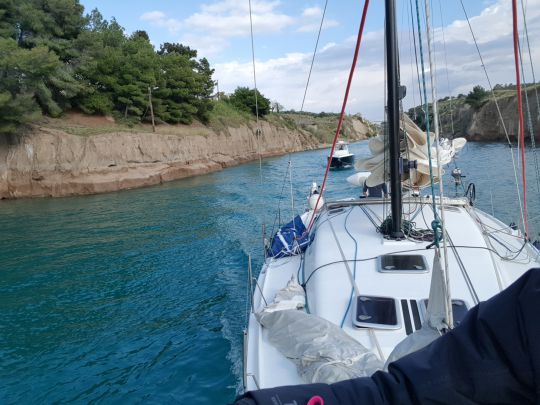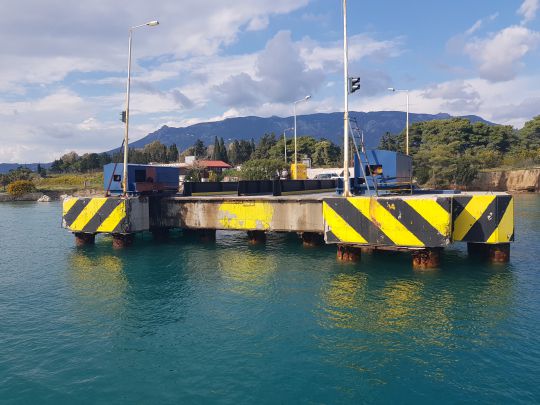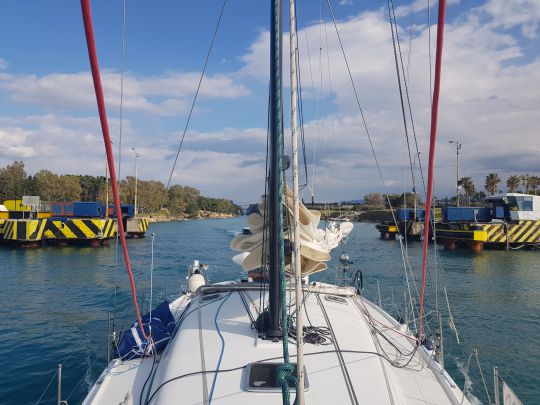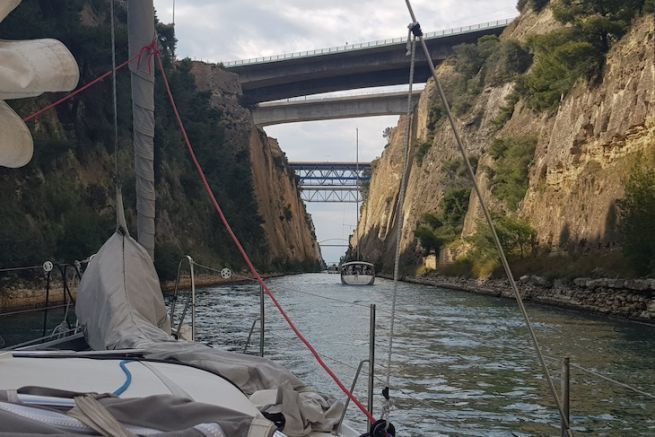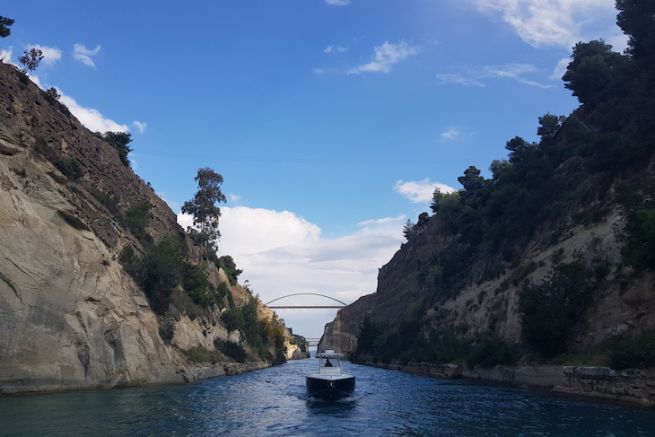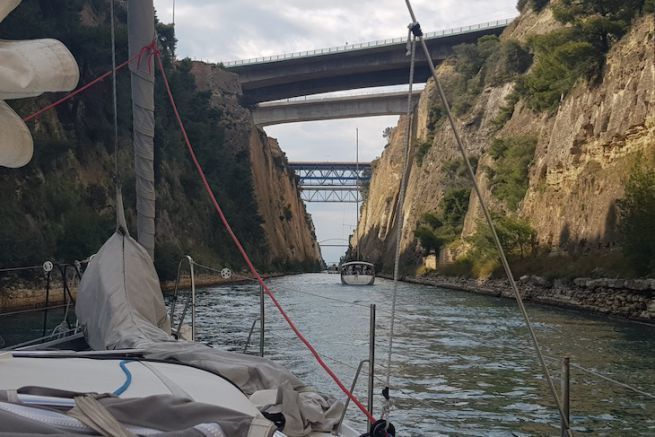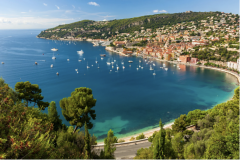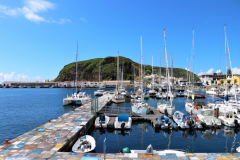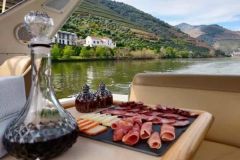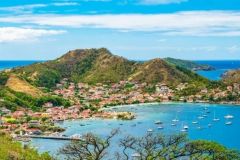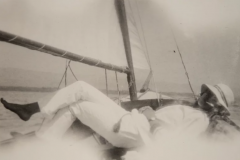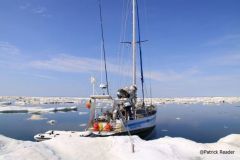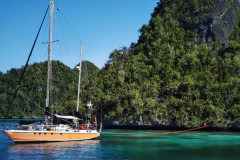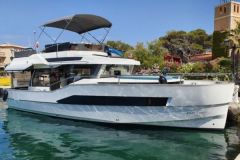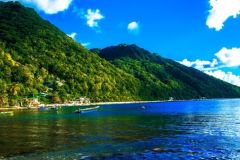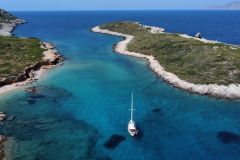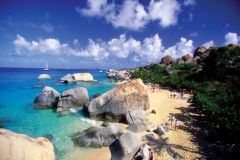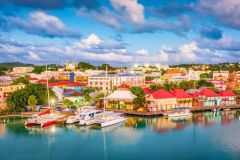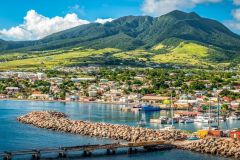Unfortunately closed due to landslides since the beginning of 2021, the Corinth Canal remains an extraordinary place for which we hope the reopening. Story of a navigation on this atypical waterway.
But where is the entrance to the euro channel?
Coming from Athens, it is thus by the Aegean Sea that we arrived to pass the Corinth Canal. Protected by the valleys whose summits were still covered with snow in this month of April, we advanced without seeing the entrance, nestled at the bottom of the gulf. But where could the entrance to thealeuros channel be hidden? Armed with our binoculars, we saw the land getting closer, but still no passage allowing us to cross the mountain.

It is finally only a few miles away that we discovered the famous passage, barricaded by a big yellow and black barrier. To reach the eastern entrance, named Isthmia, you must first go to the northwestern bay of Kenkhreon Kolpos. You have to get as close as possible to the canal control tower to see the entrance. In summer, due to the strong Meltem euro wind from the eastern Mediterranean, the traffic is mainly in this direction.
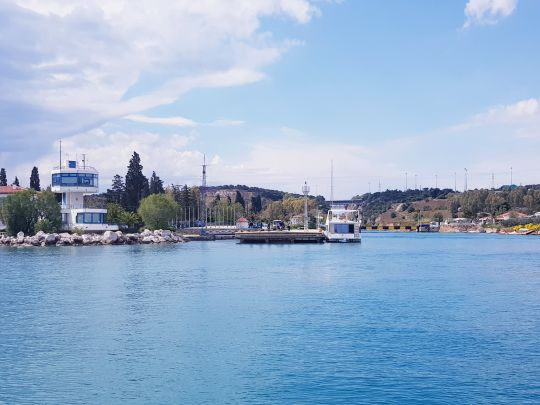
Mandatory pit stop
Before crossing, it is necessary to pay the passage fees and to go through the administrative formalities. You must moor along the south side of the dock. Although the dock is protected by large rubber bumpers, its height does not allow for proper protection of your hull. It will be necessary to install a maximum of fenders on the port side to protect your boat.
Vessels larger than 25 m must call the control tower to request a pilot boat, on which they will complete the customs formalities.

An expensive right of way!
For the boaters, it is enough to join the office of the port for the formalities. You will have to fill in the document reserved for individuals and pay the right of passage. Be aware that the Corinthian Canal is one of the most expensive per mile in the world. Boats are taxed according to their length, their flag and their type, private or charter boat. Without forgetting to add the VAT of 23%. Thus, boats up to 9 m pay 80 euros plus VAT.

For each additional m and up to 15 m, the rate is 23 euros. For a boat of 12 m as it was the case for us, it is necessary to pay 189,89 euros TTC. You can pay by credit card or in cash.
Please note that the canal is closed every Thursday from 6:00 a.m. to 6:00 p.m. for repairs related to rock crumbling and dredging operations.
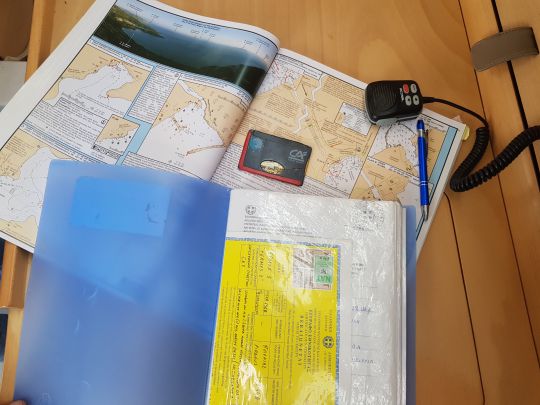
We're waiting for the euro signal!
Once the paperwork is done, you have to wait. The passage in the canal is done in an alternative way, there is not the place to cross. So we wait for some to leave, but especially since we cross in convoy, we must wait to be numerous enough. The wait can last up to 3 hours, which was fortunately not our case.
Beware of large ships coming from the other direction. The water they push may break the moorings. In such cases, it is better to make circles in the water at the entrance of the bay. Avoid the small harbor on the north side, as there is no dock to tie up.
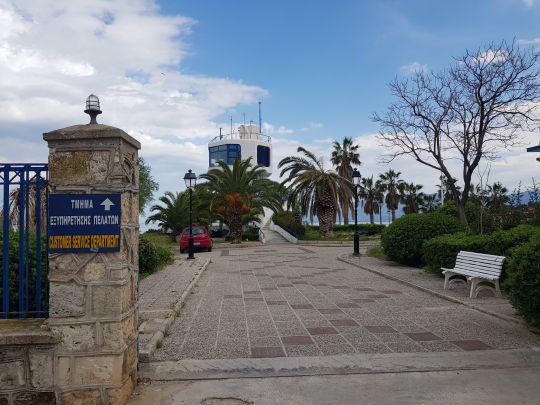
It's our turn!
We begin to see our neighbors of pontoons to agitate. We are going to be able to goeuros! The VHF is turned on to Channel 11 and we finally hear, "Hermes 3, goeuros!"
euros following the other euros, usually 3 or 4 euros boats, we untie our moorings and slowly move towards the submersible bridge. Since 1988, these two barriers that disappear completely under water allow to regulate the traffic: the Poseidonia bridge in the west and in the east, the Isthmia bridge.
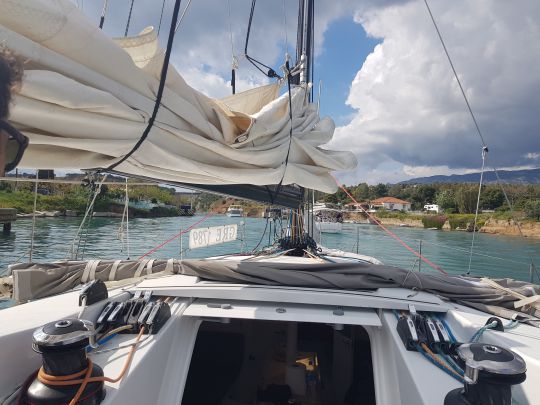
A huge limestone tunnel
It is rather magic to be in this narrow tunnel euros in spite of its 25 m broad, the traces of paintings decorating the rocks are numerous. The immense limestone rocks culminate at nearly 80 m high and we feel quite small.

Be careful, a current of 1 to 3 knots agitates the sea, and this in both directions, depending on the wind direction. The tipping is generally done every 6 hours, with a one hour break between each tipping.
The maximum speed is 7 knots and it is thus cautiously that we advance, with the tail, leu. A small jacket warms our skins deprived of sun by the rocky mountains.
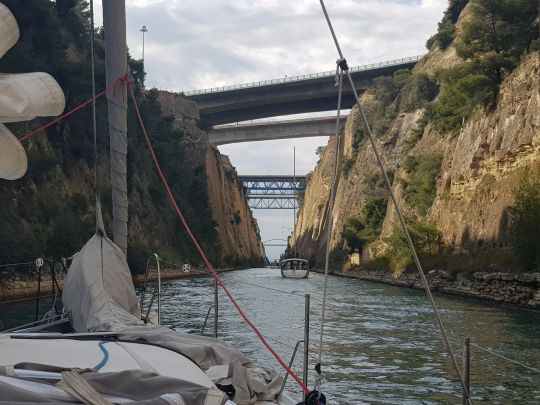
Be careful if you follow a passenger ship, the wake of its propellers quickly produces a washing machine effect!
We are on the other side!
At the end of a little less than an hour of crossing, we see the second barrier euros Posidhonia west side and the Aegean Sea that opens to us! Thus ends this crossing which will have transported us the time of an afternoon in a world of rock and sea.
